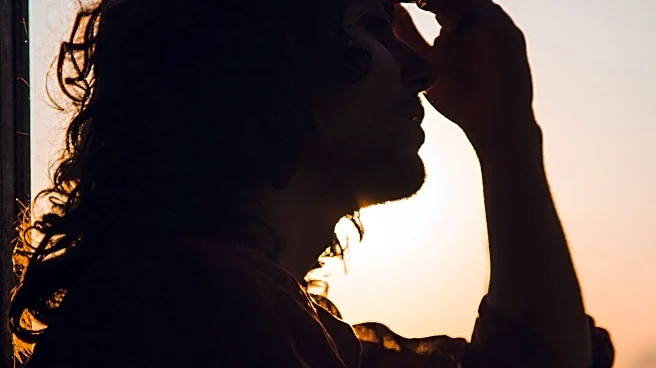What's Happening?
An individual has shared their personal experience of overcoming insomnia through the nightly viewing of the animated film Ratatouille. The person, diagnosed with ADHD and autism during the lockdown, found solace in the film's consistent soundscape, which lacks sudden loud noises or jump scares. This nightly ritual began when the individual was a teenager, and Ratatouille has been their go-to film for sleep for over 15 years. Despite rarely making it past the opening credits before falling asleep, the individual expresses a deep affection for the film, which has become a comforting presence in their life.
Why It's Important?
This story highlights the unique ways individuals cope with sleep disorders and the role of media in providing comfort and routine. The use of a film as a sleep aid underscores the importance of consistent auditory environments for those with ADHD and autism, offering insights into non-traditional methods of managing symptoms. It also reflects broader societal themes of finding personal solutions to mental health challenges, emphasizing the significance of media as a therapeutic tool. This narrative may inspire others facing similar issues to explore unconventional methods for improving their sleep and mental well-being.
What's Next?
The individual plans to continue using Ratatouille as their nightly sleep aid until a sequel is released, which they hope might serve as an alternative. This ongoing reliance on the film suggests a stable coping mechanism, but also raises questions about the potential impact of new media on established routines. As the sequel is in development, it may offer a fresh auditory experience that could either enhance or disrupt the individual's sleep pattern. The story also invites further exploration into the therapeutic use of media for mental health, potentially influencing future research and treatment approaches.
Beyond the Headlines
The individual's story sheds light on the broader cultural and psychological implications of using media as a coping mechanism. It raises ethical considerations about the reliance on entertainment for mental health support and the potential commercialization of such practices. Additionally, it highlights the cultural significance of films like Ratatouille, which can transcend their intended purpose to become integral parts of personal well-being strategies. This narrative may prompt discussions on the intersection of media, mental health, and personal identity, encouraging a deeper understanding of how cultural products influence individual lives.












